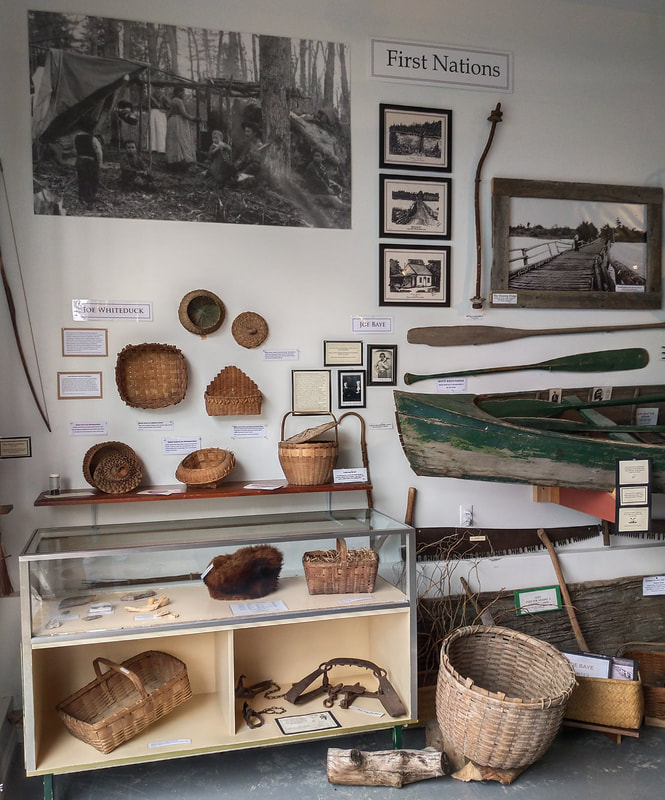|
The story of a young girl accompanying her mother in a canoe as they travelled down the Clyde River form the area known as Clyde Forks to Lanark to sell baskets is highlighted in the Indigenous Exhibit at the Middleville and District Museum. The girl’s name was Sarah and her story is an important part of the Museum’s ongoing efforts to research and include the names and stories of Indigenous people who lived in the area now known as Lanark Highlands. Sarah’s mother, Marie, collected osiers from the marshlands around Clyde Forks. Visitors will learn that osiers are long, pliable twigs of willow used to weave baskets. Several exquisite baskets on display at the Museum show the work of true artisans like Marie. The decorative design and inclusion of colour show an exceptional attention to detail. Visitors will also learn that Sarah was known as ‘Opichee’, (in reference to the song of a Red Winged Blackbird) by her community because of her beautiful singing voice. Sarah and Marie were part of the Whiteduck family. The legacy of the Whiteduck family’s historic efforts to bring wild rice seed from Rice Lake to establish rice beds in Mud Lake is commemorated with a plaque in Ardoch. Several local lakes that visitors are familiar with have rice beds that still grow today. Many of these beds were probably seeded by the natural movement of birds and animals from one wetland to another. The Middleville and District Museum uses QR Codes to share Indigenous voices that teach about the deep historical significance of wild rice to their ancestors. The stories shared in the Museum’s exhibit help to educate visitors about the people who once lived their lives in the area where the Museum now stands.
Compiled using information from the Whiteduck Research paper prepared by Randy Rosenberger and Dorothy Whiteduck Rosenberger
0 Comments
Leave a Reply. |
AuthorThis journal is written, researched, and maintained by the volunteers of the Middleville Museum. |
